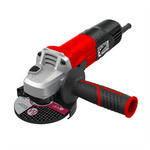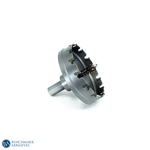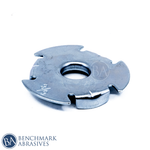
Which Sanding Belts Do I Use On Wood?
Sanding Belts: What Are They?
Since its creation, the belt sander has revolutionized metal and woodwork. Fabricators can now work fast and effectively in a way that was not feasible before the invention of this incredibly adaptable instrument. Sanding belts have simplified metalworking and woodworking, allowing users to do large amounts of sanding and grinding without getting tired. The abrasive sanding belts are arguably the belt sander's most crucial yet ignored part. The actual belt sander component contacts the workpiece to grind and scrape the surface layers off.
You might not know how difficult and important it is to choose quality sanding belts, but getting it wrong can damage both the materials you're working with and your belt sander. When you consider the enormous variety of different types of sanding belts currently offered on the market, choosing one appropriate for your work may be complicated. That’s why it helps to understand what makes the best sanding belts for woodworking—from grit selection to backing material—so you can make informed choices that match your tools and project needs. This detailed guide was created to answer any challenging queries you might have. It also identifies the ideal sanding belts for the job at hand.
The Five Most Popular Sanding Belt Equipment Styles
Hand-powered belt sanders, tube belt sanders, belt file sanders, floor sanders, and stationary sanding belt grinders are the five most typical machine types you'll use a sanding belt on. Each piece of equipment has a specific function for its assigned tasks.
1. Belt Sander Powered By Hand
One of the most popular tools among DIYers, homeowners, and woodworkers is the corded and battery-powered hand sander. Several machines have dust collectors and various speeds, enhancing their adaptability. These portable sanders are suitable for finishing and smoothing surfaces on tiny project components and larger areas like decks. Sanding belts in sizes 3" x 21", 3" x 18", and 4" x 24" are the most frequently used belt sizes for hand sanders.
2. Tube Belt Sanders
The pulley system of tube belt sanders, also known as pipe polishers, enables the sanding belt to contour around tube-shaped surfaces. Devices are often electrically powered and portable.
3. Belt File Sanders
Belt file sanders are portable sanding devices using thin, slender sanding belts. These tools are excellent for removing welds from inner corners or squeezing them into small workspaces. 3/8" x 13", 1/2" X 24", and 1/2" x 18" are typical sizes.
4. Floor Belt Sanders
Floor belt sanders are portable sanding devices that the operator manually pushes to sand wood floors efficiently. These floor drum sanders enable quicker completion of larger tasks but often require smaller tools to adequately smooth the edges (such as Edger Disc Sanders). Floor sanding belts typically come in 8" x 19" and 7-7/8" x 29-1".
5. Stationary Belt Grinder
Bench-mounted, pedestal-mounted, or even massive machines with their stands are all options for stationary belt grinders. Depending on the purpose, these machines use belts of varying sizes and are built in various ways. Many workers are employed in large industrial facilities or specialized fabrication shops. The most common sizes are 1" x 30," 2" x 72," 4" x 36," and 6" x 48."
These devices frequently contain an integrated disc sander that shares the same motor as the belt pulley. These tools, sometimes known as combo belt grinders, are highly regarded by knife makers.
Useful Sanding Belt Tips
- Clean up after your sanding belt. Sanding belt efficiency is significantly reduced when the material is loaded onto the belt. To remove any loaded objects, use a rubber belt sander cleaner stick or apply oil to the belt before using it with metal.
- Defend yourself. For dusty tasks, it's wise to use safety goggles, a face shield, and a respirator.
- Check out your sander. The belt will be sanded unevenly if there are any divots or bumps in a drum, wheel, or roller.
- Be sure the object you are working on is firmly secured and immobile before using a power hand sander. A loose surface will result in a non-linear pattern, which requires redoing.
- Your belt's speed should be adjusted based on the task at hand. A higher speed allows you to cover a larger area with less effort, whereas a lower speed increases mobility.
- During sanding, a pencil is your best friend. You can get helpful visual cues on how to sand a surface by marking guidelines on it. You can use it to show you where more sanding is necessary.
- Never turn back and forth; always move forward and backward. This almost minimizes the possibility of damage to the belt and the sanding machine and prevents the belt from slipping.




































































